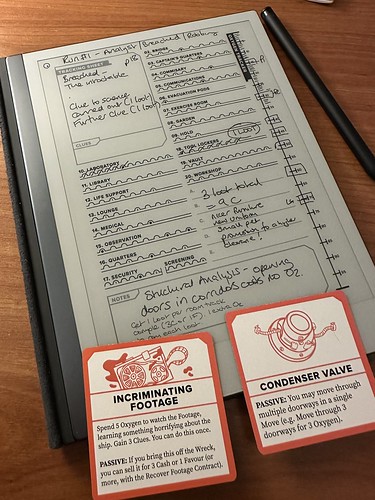After we finished the campaign, I asked the players if they could give me some thoughts. We ended up chatting for quite a bit about what had gone on and actually had an extra session at the end for any questions (which I won't share details of because of spoilers). Here are some edited highlights:
 |
| Kelwarin (Graham/First Age) - Sorceror |
I struggled with some of the set-piece conflicts, and as a GM myself I wondered if really we should have survived some of them. Who knows! The final battle didn't entirely work for me. It felt tactically correct, and booming difficult to DM, as there was such a weight of resources being chucked about. I'm glad it wasn't a TPK, but part of me felt it really should have been[2].
I was left feeling that, for me, 5e is 'OK' and serviced well enough to show our progression and manage the tactical when it cropped up. Roll20 was OK too, with improving AV over the life of the campaign. I'm not that much of a fan of it, but 'OK'.
I am very glad to have been a player and think it would be nice for us to continue playing as a group if we can find another game to play. I hadn't realised on starting to play in the campaign that it would take three years. In a way, I am glad that I didn't know back then, because I might have stepped away and completely missed out on a great experience!
We had a pretty low-resource campaign, all in all; we didn't get a ton of magic items (and the ones we had, mostly had passive bonuses, like ring of protection, not activated abilities), and there weren't a lot of opportunities to obtain any[3] - I don't know whether we just missed the opportunity to sign up to VistaniPrime, and get some loot delivered from beyond the veil or not. So with that as a backdrop, Gaddock had received two full spellbooks as a loot, which felt almost like level-ups for a wizard, since he could transcribe new spells, which further opened up a gap between the two spellcasters
 |
| Ser Adon (Paul/DrMitch) |
Adon’s thoughts: It’s over. I thought we were doomed in that fight, but it’s as if Strahd wasn’t so vanquished in righteous fury, but just…got bored with the game. Calling me out to a duel was an act of boredom. He thought he would comfortably defeat me, then move onto my companions who had withstood all he could throw at him, but maybe part of him was hoping otherwise. Especially Alys.
Later: I’m relieved that four blows in a row on Strahd all backed up with the special Strahd-killing sword we went to great effort to obtain and backed up by undead-killed smites (after all the damage others had done) did the job. I’m glad we didn’t explore the castle more!
 |
| Ser Alys (Tom/Guvnor) |
Ser Alys's plans: Settle down, have kids, keep Fiona Wachter in living fear of me
Thank you very much for running this awesome campaign. I enjoyed keeping Alys on the side of good when she could have been seduced by the lawful rationale of Strahd. That was down to the wonderful relationship Paul and I developed and nurtured. On occasion, I felt as a player that a few hints might have helped. Once we went into the Castle once and were terrified and the clock was ticking then pulling him out into the sun seemed wise.
In the final combat, I didn't feel Strahd was behaving like a strutting arrogant Gothic anti-hero. He was a sneaking cowardly assassin. It felt off but hey, not everyone is Gary Oldman [4]
I also felt that the interesting social interaction was with the Wachters and how we manoeuvred around her. The apathy of the other locals was dispiriting, was it meant to be?[5]
There were some great fights that were genuinely challenging and scary. I like 5e fine, and Roll20. It was one of the campaigns I shall always remember.
 |
| Gaddock (Alex) |
Gaddock's thoughts: Time to pack it up, and leave this blasted land behind, carrying it only in the sigils of our numerous scars. Gaddock is still worried about the influence of Vampyr on the larger multiverse - was killing Strahd just killing a vessel or dispersing the entity? Gaddock thought they needed to contain Strahd in amber, but mists have receded and Barovia returned to the fold with Strahd's death nonetheless. Gaddock is looking for a vacation - somewhere hot to rest his heels, and not worry about doom for a while. He might still return to Amber Temple and offer his help to research Vampyr, but tensions are still a bit hot right now, given how they've left the place last. Maybe give it a couple of years, and let the undead-dementia wash over the incident.
30 July 2023
(Material taken from discussions on Discord 22 March to 4 April 2023)
(This isn't the final campaign post, that's still being pulled together).







